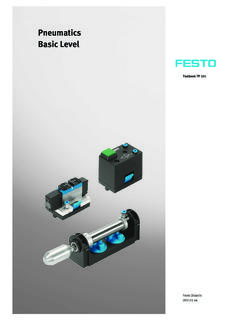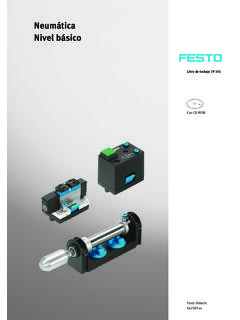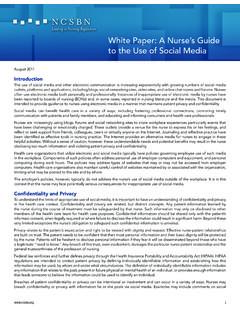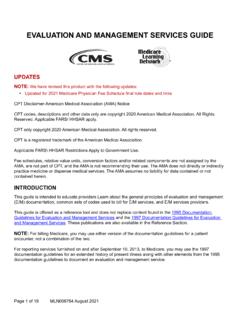Transcription of RADIOGRAPHY JANUARY 2021 DIDACTIC AND CLINICAL …
1 RADIOGRAPHY DIDACTIC AND CLINICAL COMPETENCY REQUIREMENTS ARRT BOARD APPROVED: JANUARY 2021 EFFECTIVE: JANUARY 2022 1 COPYRIGHT 2021 BY THE AMERICAN REGISTRY OF RADIOLOGIC TECHNOLOGISTS ALL RIGHTS RESERVED. REPRODUCTION IN WHOLE OR IN PART IS NOT PERMITTED WITHOUT THE WRITTEN CONSENT OF THE ARRT. RADIOGRAPHY 1. Introduction Candidates applying for certification and registration under the primary eligibility pathway are required to meet the Professional Education Requirements specified in the ARRT Rules and Regulations. ARRT s RADIOGRAPHY DIDACTIC and CLINICAL Competency Requirements are one component of the Professional Education Requirements. The requirements are periodically updated based upon a practice analysis which is a systematic process to delineate the job responsibilities typically required of radiographers.
2 The result of this process is a task inventory which is used to develop the CLINICAL competency requirements (see section 4 below) and the content specifications which serve as the foundation for the DIDACTIC competency requirements (see section 3 below) and the examination. 2. Documentation of Compliance Verification of program completion, including DIDACTIC and CLINICAL Competency Requirements and all degree-related requirements including conferment of the degree, will be completed on the Program Completion Verification Form on the ARRT Educator Website after the student has completed the Application for Certification and Registration. Candidates who complete their educational program during 2022 or 2023 may use either the 2017 DIDACTIC and CLINICAL Competency Requirements or the 2022 requirements.
3 Candidates who complete their educational program after December 31, 2023 must use the 2022 requirements. 3. DIDACTIC Competency Requirements The purpose of the DIDACTIC competency requirements is to verify that individuals had the opportunity to develop fundamental knowledge, integrate theory into practice and hone affective and critical thinking skills required to demonstrate professional competence. Candidates must successfully complete coursework addressing the topics listed in the ARRT Content Specifications for the RADIOGRAPHY Examination. These topics would typically be covered in a nationally-recognized curriculum such as the ASRT RADIOGRAPHY Curriculum. Educational programs accredited by a mechanism acceptable to ARRT generally offer education and experience beyond the minimum requirements specified in the content specifications and CLINICAL competency documents.
4 4. CLINICAL Competency Requirements The purpose of the CLINICAL competency requirements is to verify that individuals certified by the ARRT have demonstrated competence performing the CLINICAL activities fundamental to a particular discipline. Competent performance of these fundamental activities, in conjunction with mastery of the cognitive knowledge and skills covered by the certification examination, provides the basis for the acquisition of the full range of procedures typically required in a variety of settings. Demonstration of CLINICAL competence means that the candidate has performed the procedure independently, consistently, and effectively during the course of his or her formal education.
5 The following pages identify the specific procedures for the CLINICAL competency requirements. Candidates may wish to use these pages, or their equivalent, to record completion of the requirements. The pages do NOT need to be sent to the ARRT. RADIOGRAPHY DIDACTIC AND CLINICAL COMPETENCY REQUIREMENTS ARRT BOARD APPROVED: JANUARY 2021 EFFECTIVE: JANUARY 2022 2 General Performance Considerations Patient Diversity Demonstration of competence should include variations in patient characteristics such as age, gender, and medical condition. Elements of Competence Demonstration of CLINICAL competence requires that the program director or the program director s designee has observed the candidate performing the procedure independently, consistently, and effectively during the course of the candidate s formal educational program.
6 Simulated Performance ARRT defines simulation of a CLINICAL procedure routinely performed on a patient as the candidate completing all possible hands-on tasks of the procedure on a live human being using the same level of cognitive, psychomotor, and affective skills required for performing the procedure on a patient. ARRT requires that competencies performed as a simulation must meet the same criteria as competencies demonstrated on patients. For example, the competency must be performed under the direct observation of the program director or program director s designee and be performed independently, consistently, and effectively. Simulated performance must meet the following criteria: Simulation of imaging procedures requires the use of proper radiographic equipment without activating the x-ray beam.
7 A total of ten imaging procedures may be simulated. Imaging procedures eligible for simulation are noted within the chart (see section ). If applicable, the candidate must evaluate related images. Some simulations are acceptable for General Patient Care (see section ). These do not count toward the ten imaging procedures that can be simulated. RADIOGRAPHY -Specific Requirements As part of the education program, candidates must demonstrate competence in the CLINICAL procedures identified below. These CLINICAL procedures are listed in more detail in the following sections: Ten mandatory general patient care procedures; 36 mandatory imaging procedures; 15 elective imaging procedures selected from a list of 34 procedures; One of the 15 elective imaging procedures must be selected from the head section; and Two of the 15 elective imaging procedures must be selected from the fluoroscopy studies section.
8 One patient may be used to document more than one competency. However, each individual procedure may be used for only one competency ( , a portable femur can only be used for a portable extremity or a femur but not both). RADIOGRAPHY DIDACTIC AND CLINICAL COMPETENCY REQUIREMENTS ARRT BOARD APPROVED: JANUARY 2021 EFFECTIVE: JANUARY 2022 3 General Patient Care Procedures Candidates must be CPR/BLS certified and have demonstrated competence in the remaining nine patient care procedures listed below. The procedures should be performed on patients whenever possible, but simulation is acceptable if state regulations or institutional practice prohibits candidates from performing the procedures on patients.
9 General Patient Care Procedures Date Completed Competence Verified By CPR/BLS Certified Vital Signs Blood Pressure Vital Signs Temperature Vital Signs Pulse Vital Signs Respiration Vital Signs Pulse Oximetry Sterile and Medical Aseptic Technique Venipuncture* Assisted Patient Transfer ( , Slider Board, Mechanical Lift, Gait Belt) Care of Patient Medical Equipment ( , Oxygen Tank, IV Tubing) *Venipuncture can be simulated by demonstrating aseptic technique on another person, but then inserting the needle into an artificial forearm or suitable device. Imaging Procedures Institutional protocol will determine the positions and projections used for each procedure.
10 When performing imaging procedures, the candidate must independently demonstrate appropriate: patient identity verification; examination order verification; patient assessment; room preparation; patient management; equipment operation; technique selection; patient positioning; radiation safety; image processing; and image evaluation. RADIOGRAPHY DIDACTIC AND CLINICAL COMPETENCY REQUIREMENTS ARRT BOARD APPROVED: JANUARY 2021 EFFECTIVE: JANUARY 2022 4 Imaging Procedures (continued) Imaging Procedures Mandatory or Elective Eligible for Simulation Date Completed Competence Verified By Mandatory Elective Chest and Thorax Chest Routine Chest AP (Wheelchair or Stretcher) Ribs Chest Lateral Decubitus Sternum Upper Airway (Soft-Tissue Neck) Sternoclavicular Joints Upper Extremity Thumb or Finger Hand Wrist Forearm Elbow Humerus Shoulder Clavicle Scapula AC Joints Trauma.














